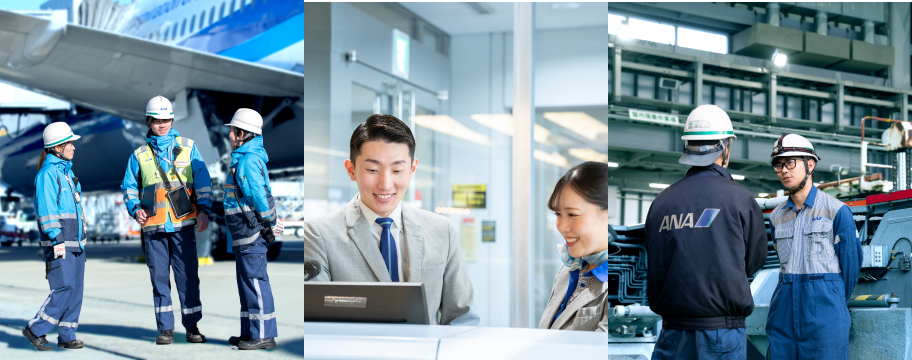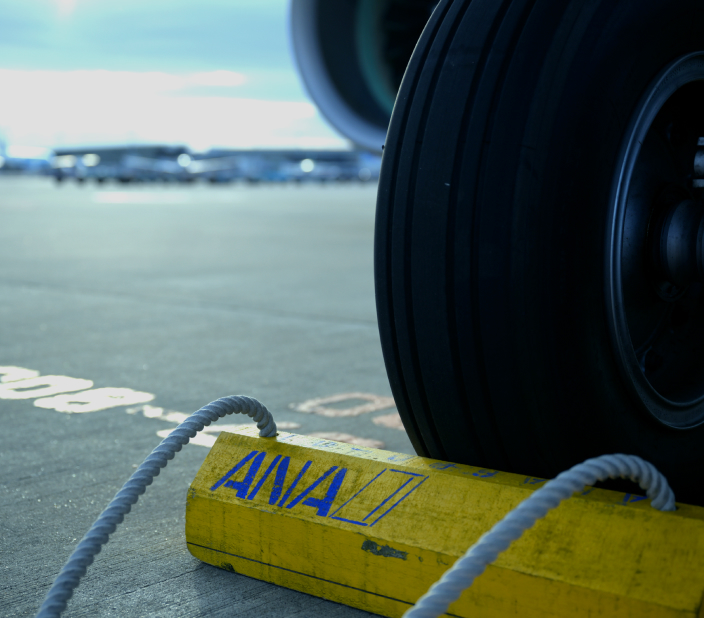


—Everything is a team effort
to make that one flight take off—
Safety comes first. Then our goal is to make that one flight take off on time.
Dedication to these goals connects everyone at NRTAS.
Let’s take a look at the teams behind the scenes that support on-time departures every day.
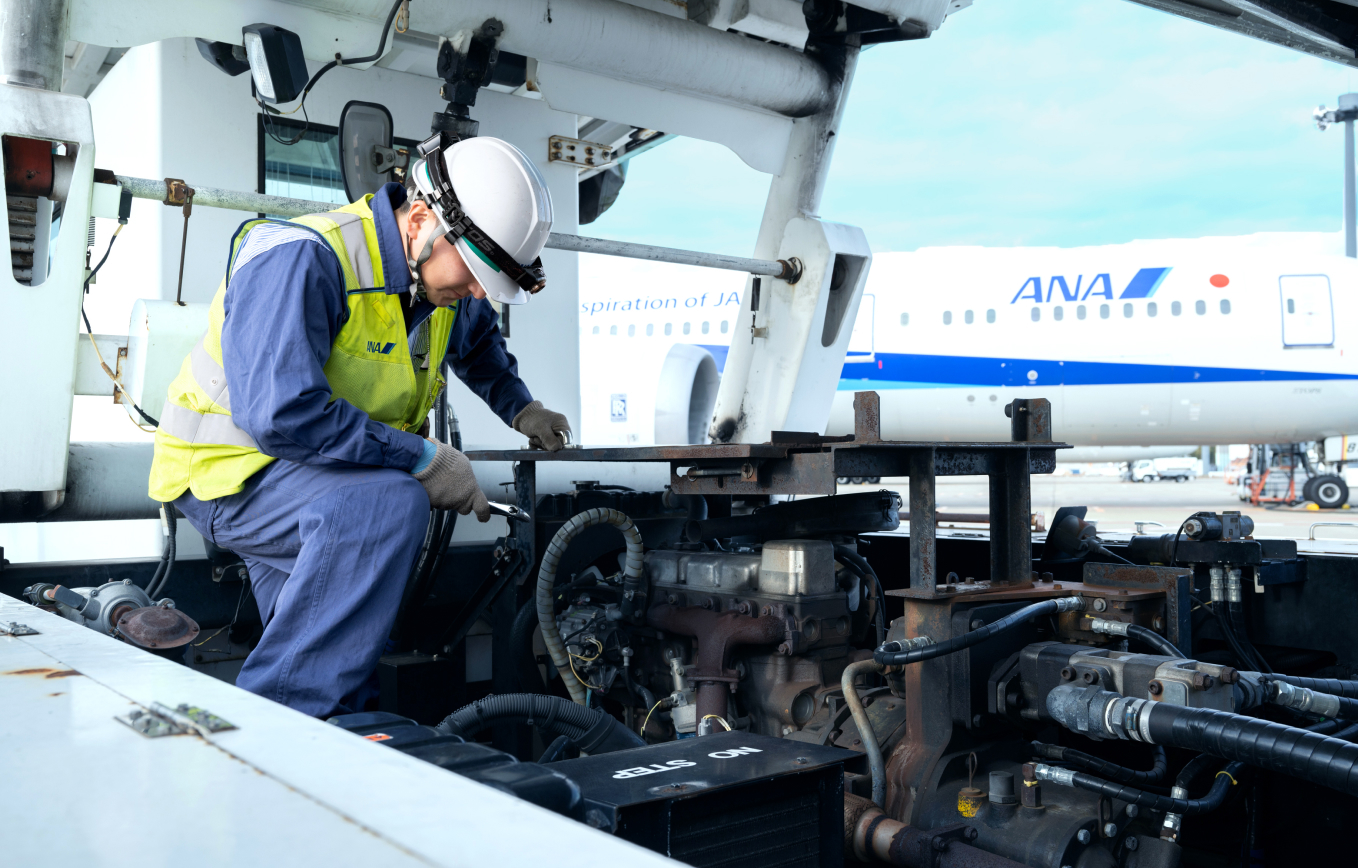
We focus all of our efforts on preparing ahead of time
so that the unexpected does not happen.
Aircraft are not the only things coming and going at Narita Airport.
Vehicles from regular cars to the ones called special-purpose vehicles that support ground
operations from an aircraft’s arrival to its departure are constantly moving around. There is an
amazing variety of special-purpose vehicles, which is understandable considering that Narita is
the largest international hub airport in Japan. There’s even a vehicle here that is the only one
of its kind in the world.
Even for the same type of vehicle, the specs, where the buttons are located and how it starts
differ for different users (each company). Ishii has spent months working to remember all the
differences but it is still an ongoing process. He inspects and repairs all types of vehicles to
ensure that the unexpected does not happen and makes sure that the vehicles are in top
condition. Mechanics often spend a long time on a task, but he cannot relax on the job, since
missing something would negatively affect the airport’s operational efficiency. Power system
errors in particular give Ishii headaches. More experienced peers with decades on the job also
struggle with this invisible adversary. Following the faintest of clues, he throws himself into
his work. The moment when he finally finds the source of a problem feels like finding hidden
treasure.
But even if he maintains the vehicles in top condition, he still cannot prevent unexplained
breakdowns from occurring. They may occur 10 minutes or 5 minutes before a departure or even in
the middle of guiding an aircraft. At these times, he quickly makes the call to bring out
another vehicle that is on standby for such contingencies. Supporting on-time departures is also
part of his job. About the vehicles that he takes care of and sends off like his children, Ishii
comments, “I just want them to be safe. I never stop worrying about them.”
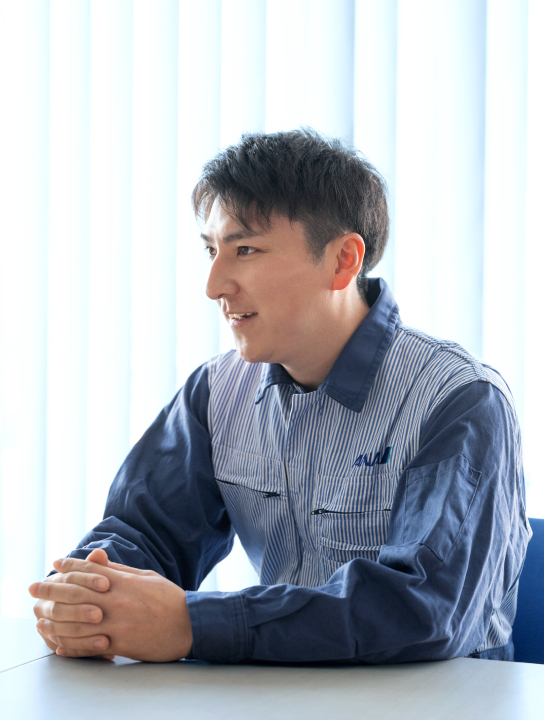
Engineering Services
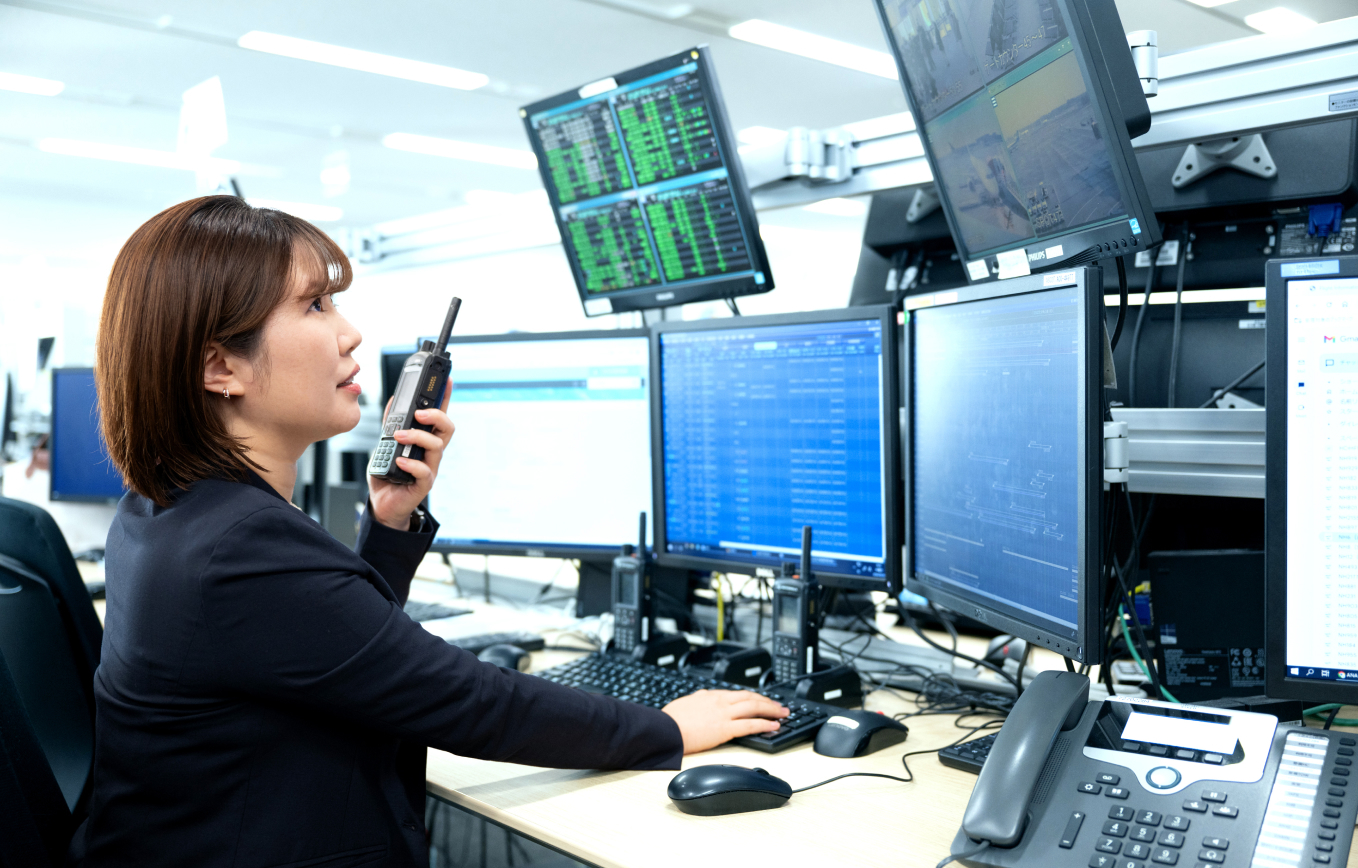
The atmosphere changes during a bank of flights.
Our spirit really shows when we need to be resourceful.
Aircraft fly into Narita one after another.
While it might always look like smooth sailing, equipment problems and lots of other unforeseen
events happen every day. For these irregularities, the team’s mission is to minimize their
impacts as much as possible and ensure on-time departures.
For example, to make up for five minutes of delay when a previous flight’s arrival was late,
Arai has to figure out what processes can and cannot be compressed as the person in charge of
process management. She shares information with all the departments at NRTAS such as Passenger
Services, the Load Master (*1), the different controllers and Spot Control as well as the AMD
(*2) and the AMO (*3) and quickly makes calculations while monitoring the overall situation at
the airport. She gives one instruction after another. The zeal she shows in agilely managing
Narita’s tight connections is nothing short of amazing. It’s usually calm at the NOC (Narita
Operations Center: *4), but the mood quickly changes when it’s time for one of Narita’s banks of
flights (*5). Almost everyone is standing, the floor bustles with movement and the air is filled
with energy. A veteran member can be seen juggling a phone and a radio transceiver at the same
time to readily exchange information. Sometimes, even after pushing their brains and their
bodies to the limit like this, something like a monitor malfunctioning after an aircraft’s door
closes stops the flight from departing on time. For Arai, the feeling of defeat is a hard pill
to swallow. “It would be impossible to achieve on-time departures by simply following what the
manual says. Everyone involved in a flight has to actively get things moving or it won’t
happen.” The more challenging process management is, the more appreciation she feels when
everything works out. When a flight takes off in the air, it leaves with her wish to “Take it
from here.”

Operations Management
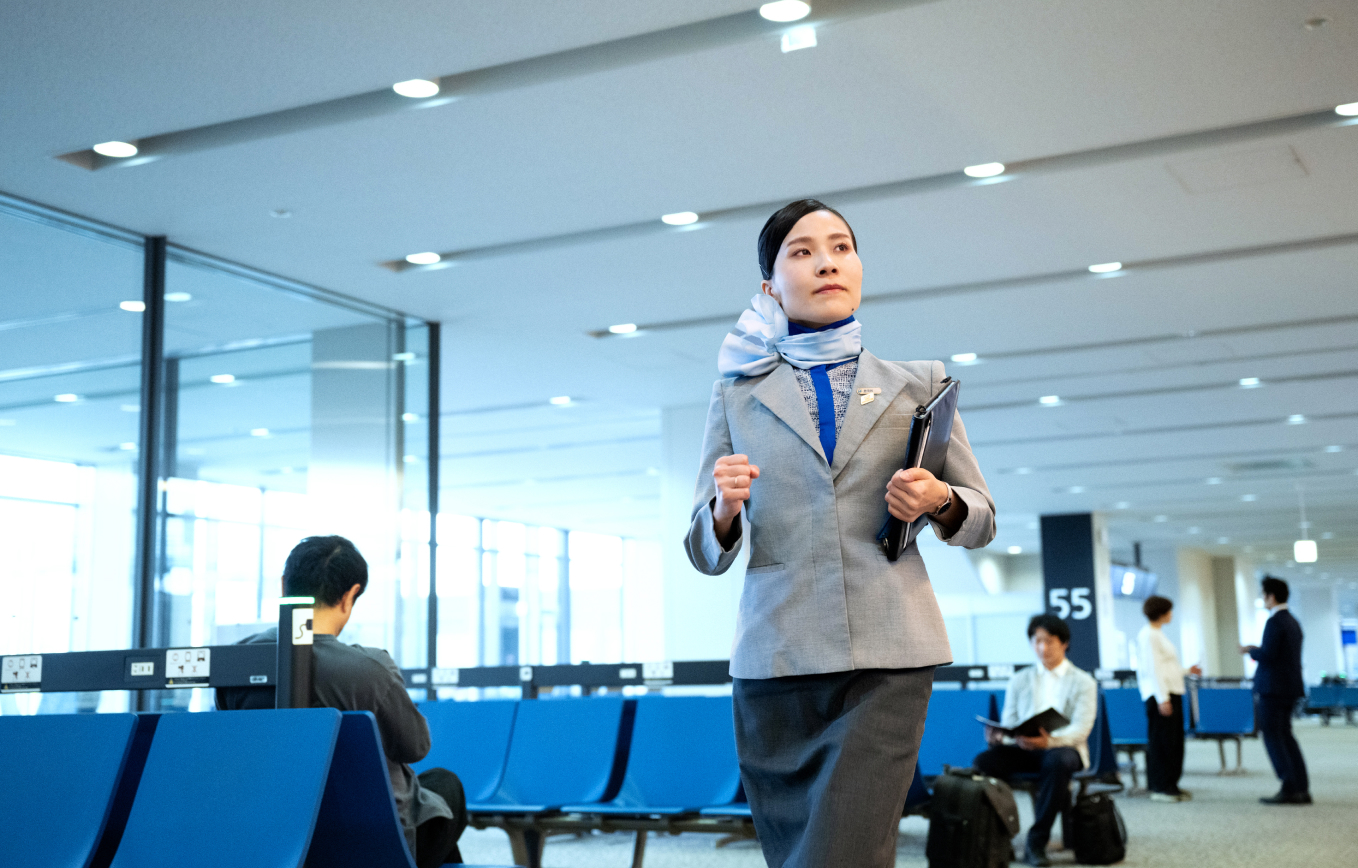
Working in challenging conditions
to ensure that everything happens on schedule.
People see Passenger Services as an elegant position that provides hospitality to
customers.
But a fight goes on behind the scenes to safeguard on-time departures. If they need to make sure
a customer gets to their flight on time, they have to be ready to run through the terminal and
lug heavy bags around until they’re out of breath. When communicating with customers, they have
to maintain their composure and provide service even if the customers make critical acomments.
When Lee initially joined NRTAS, she found the job more physically demanding than she had
imagined it would be and was impressed by her senior peers who showed a lot of guts.
As an international hub airport, Narita has a relatively high number of customers catching
connecting flights. Even when making an announcement about a delay, she needs to provide
personalized service for customers who speak many different languages and have different
cultural backgrounds, ages, and reasons for traveling. Even if she can’t be the best, she aims
to be the second best. While providing service to customers from around the world is
challenging, it helps develop NRTAS’ impressive handling capabilities. Striving for on-time
departures, Passenger Services handles the final act of boarding after Ground Handling and other
departments have set the stage.
How can we get all customers boarded within the 30-minute time limit? Knowing
that this is the time to perform fires them up. “Unforeseen events and irregularities happen on
a daily basis, but that’s when we get to demonstrate our talents and really shine,” Lee says
with a smile. To her, it feels like managing the irregularities is what forges the teamwork
inside and outside her department. NRTAS’ experience and know-how has been built up by her
predecessors in international route handling. This is an abiding source of pride and confidence
for her.
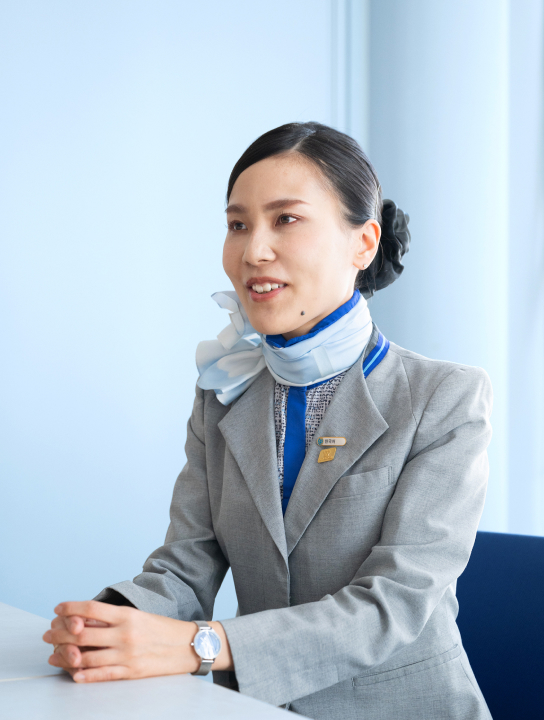
Passenger Services
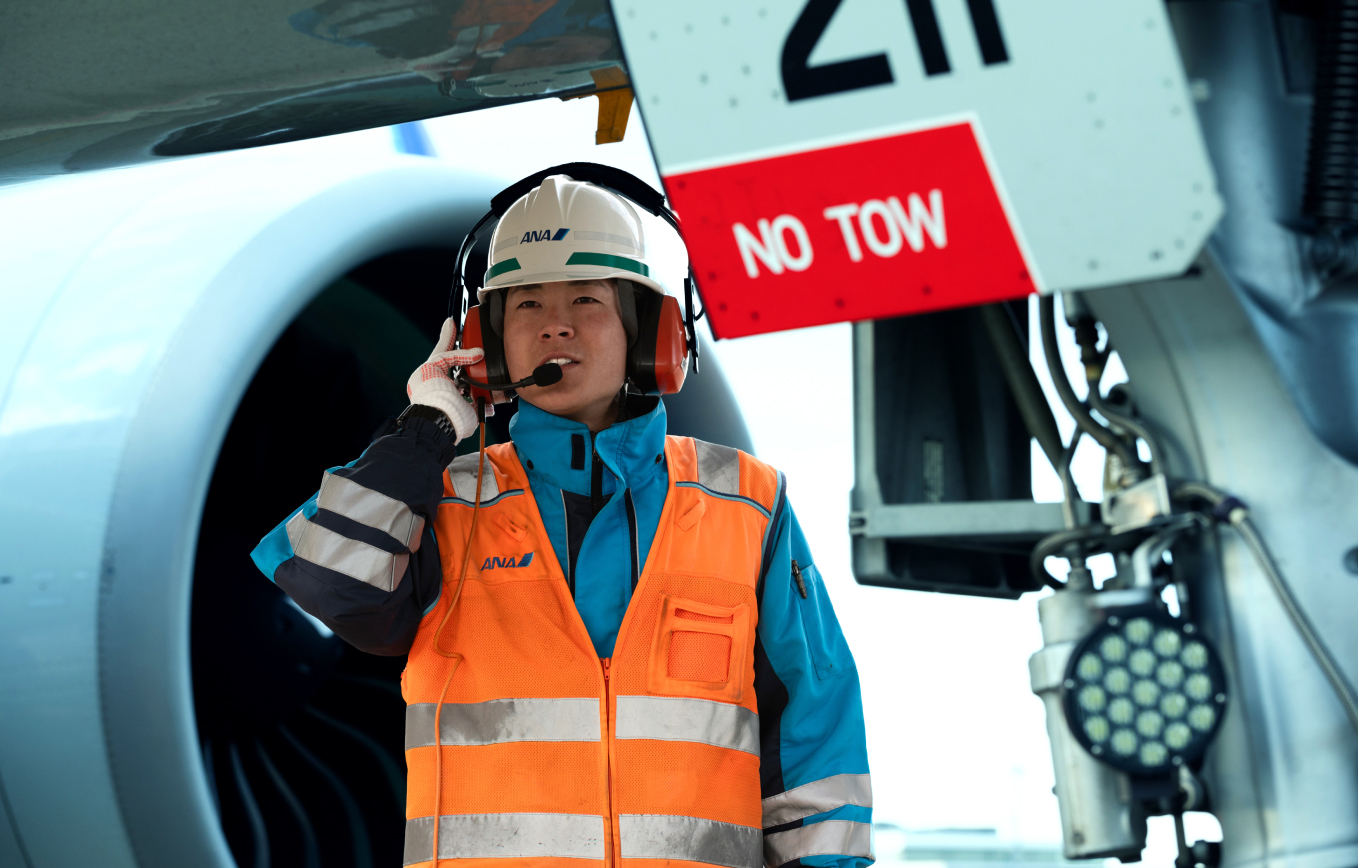
Upholding handling quality
even in bad weather.
The pushback is considered the star of ground handling operations.
Only select people who undergo advanced training are entrusted to do the pushback. Many people
choose to go into this line of work because they want to do the pushback. It is also the last
process that ensures a flight can depart on time. It’s the start of a battle against
overwhelming pressure with no room for error. In all ground handling operations including the
pushback, rain, wind and other bad weather is an adversary that can prevent on-time performance.
In summer, the strong sunshine beats down and reflects off the ground. There is almost no shade
anywhere. In winter, it’s freezing cold and you lose feeling in your hands and ears. In early
spring, clouds of dust and waves of cedar pollen blow through Narita, and we have to wear
goggles. We have to have physical endurance, powers of concentration and mental fortitude to
reliably complete operations under harsh weather and environmental conditions, where we
sometimes have to ensure accuracy within several centimeters. This is where NRTAS has earned its
reputation for quality and how we ensure that we send off flights on time.
The moment we wave goodbye to customers on a flight taking off brings a feeling of relief and
happiness that nothing can equal, no matter how many times it happens.
“I don’t think anyone can beat our handling quality, even when compared to airports around the
world,” says Maeda. Handling conditions are never exactly the same for any two flights. He wants
to remember to approach each and every flight with the same serious intensity. Maeda walks
toward his next flight, filled with pride and a sense of purpose at being able to perform
handling operations at Narita.
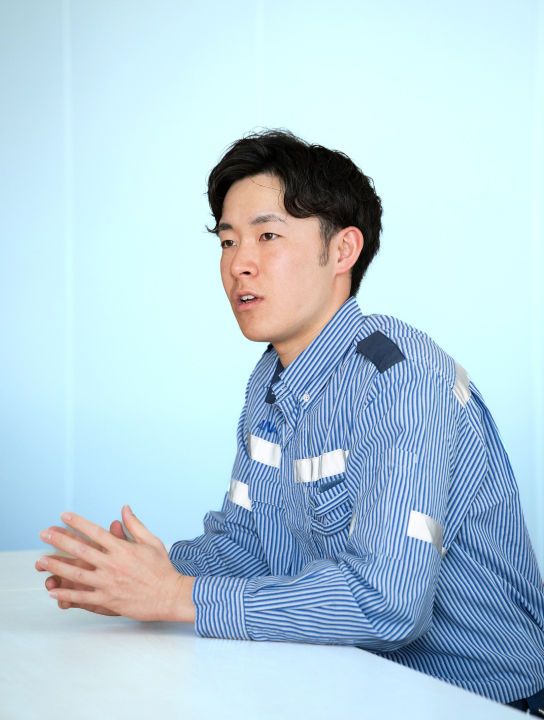
Ground Services
- ※1
- Load Master: The person responsible for airside safety operations in ground handling.
- ※2
- AMD (Airport Management Director): The person with ultimate responsibility for operations at Narita Airport.
- ※3
- AMO (Airport Management Officer): The AMO assists the AMD and creates the flight policy.
- ※4
- NOC (Narita Operations Center): The operations center at Narita Airport, which coordinates with departments and manages processes according to the flight policy.
- ※5
- Bank: The times when there are concentrated clusters (banks) of arriving and departing flights at Narita Airport.



